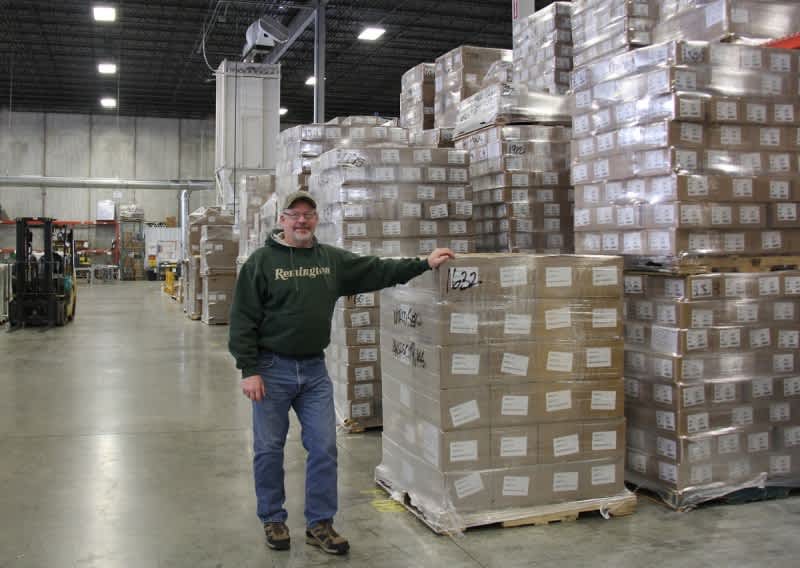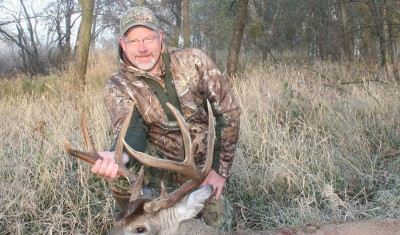Tips for Writing Your Own Outdoor Book
Bernie Barringer 04.02.14

You’ve read a book or magazine article and disagreed with the ideas you read. You may have even felt that you could have written it better. Well, the time to write a book of your own has never been better.
You know that you have something to share, and there are some things you are good at with regard to hunting and fishing. You probably even have an inkling that people would pay to hear what you have to say in some particular area of hunting or fishing, but you have one problem: the thought of writing a book scares the puddin’ out of you. Well get ready for a crash course in “If I can do this, anyone can.”
I just finished my 12th book, and I published them all myself. The books were all about the things I love: hunting, fishing, and trapping. I made a surprising amount of money on a couple of them, and all but one turned a profit. And here’s the real shocker: they were all printed books that cost quite a bit to produce and market. Today you can write an electronic book that will cost you not much more than your time to sit down and write it! First, allow me to walk you through the process of how to get the book written and then I’ll go into a brief description of how to get it out there where people can buy it.
Just do it
Where do you start? This is the question that most people get hung up on; they just don’t know how to begin. Here’s how I do it. First, pick your subject and be specific. You don’t want to write a book about deer hunting, that’s just too wide and you couldn’t possibly cover it all. You want to write about a specific part of deer hunting that you feel hasn’t been covered well. How about deer drives? Narrowing it down even more would be better, such as deer drives in farmland with shotguns. How about crappie location through the seasons? Or picking the right puppy for pheasant hunting?
You get the idea, be specific and fill a niche. All of my books have had a very tight focus. My first book on raccoon trapping in farmland that I published in 1992 was very successful. I also did one on catching raccoon, mink, and fox in snares. My book on bear baiting has been very successful. I know the subject well and no one had done an in-depth book at bear baiting tactics and strategies before.

Once I have chosen a specific subject, I take out a pen and paper and just start listing topics that I would like to include in the book—very specific topics laid out in no particular order; when they come to mind I write them down. You will probably have a list of 40 to 50, or even more. Then start organizing the topics into categories. You will find that certain topics go together well and once you have them all divided up into categories, you realize you just have your list of chapters for the book. Put the chapters in a logical order and you have your table of contents right there in front of you. Your book is taking shape.
You do not have to write the first chapter first. Pick the chapter that seems like it would be the easiest or the most fun to write and write that one. Then do another, and another, and pretty soon your book is written. You will most likely add a few topics along the way as you think of them and possibly even another chapter.
Publishing your book
If you have no knowledge of basic design programs, here is where you are going to spend a little money. Get someone who knows how to do page layout and have it done right. If you can learn to use design software and have an eye for what looks nice on a page, you can do it yourself with one of the many publishing programs. I have done the layout on a dozen or so books for others besides my own books—and if I can do it, anyone can.
There are three basic ways to self-publish your book: press run, electronic, and print on demand. Press run is the most expensive and risky, plus you have the issue of marketing and storage of your books. The more quantity you print, the cheaper per book, but you don’t want to be sitting on $10,000 worth of inventory if the book doesn’t sell. If you do not have a solid game plan for how you are going to market the book do not even think about the press run option.
Usually, you need to print about 1,000 books to make the pres run option worthwhile. My recent book called The Freelance Bowhunter was a press run of 3,500 books. I expect to sell more than that over the next five years, but I am willing to exchange a little less profit per copy to keep my risk down.
Print on demand is a good option for small publishers. In this case, you work with a printer who will do short press runs. There is little risk, because you have them print a book when you get an order for the book. You will make very little per book, but sometimes this is a good way to get started with very little investment. Once you get a feel for how well the book will sell, you can consider a press run for the book or for your next work. Beware of scam artists who offer “vanity publishing.” Most of them will ask for a fee up-front and they appeal to the person’s starry-eyed desire to see their name in print and get rich quick. They will take your money and you won’t likely make it back by selling books through them. Spend some time seeking out a good print on demand service and work with them.

The best way to start out is to do an electronic book that will be sold through Nook, Kindle, and the like. The profit margins for electronic books are even better than print on demand, and the booksellers do all the marketing for you. Make sure you use a catchy title and use good keywords to bring your book to the top of the search findings. If anyone says they loved your book, make sure you twist their arm until they give you a good review on Amazon—great reviews really sell books.
For electronic books your primary cost is using a service to convert your documents into the correct format. You can do it yourself if you care to learn a new software program such as Calibre, which converts it for you. One of the advantages of these books is there is no inventory to worry about and no shipping to pay for.
Promote your book
Once you put the book out there, it drives itself for the most part, but you can increase sales by promotions. Some writers cruise the online forums and promote their book that way. You can buy very targeted advertising online these days. A walleye fishing book advertised on a walleye fishing website is reaching a very fertile market; much better than advertising in a general fishing magazine.
Promote your book on Facebook. For as little as $1 a day you can have a small ad for your book placed on the timelines of everyone who has expressed an interest in the subject. Nearly 800,000 people on Facebook have listed “bear hunting” as an interest. For a small fee, Facebook hits them up with an offer for my book.
Send complimentary books to outdoor writers and ask them to do a review. Each time an outdoor columnist for a major newspaper does a short piece on one of my books, I see a flurry of orders through Amazon and my own website.
Speaking of websites, I have my own page to sell my books, which means that my profit is better than the ones sold on Amazon because I do not have to pay Amazon’s commissions. Directing the traffic to the site is a little more work, but worth the effort. If you are willing to spend the time and money to build and maintain a website, your profit margins are a little greater.
There will always be people who want to hold a book in their hands and turn the pages, but electronic books are the future of publishing and the best portal for aspiring writers to get their feet wet on a small budget. You may never make life-changing money on a book, but you may find yourself with a pleasant part-time income stream if you work at it. You have something to say that people want to read. It’s time to start saying it!
Follow Bernie’s bowhunting adventures on his blog, bowhuntingroad.com.

